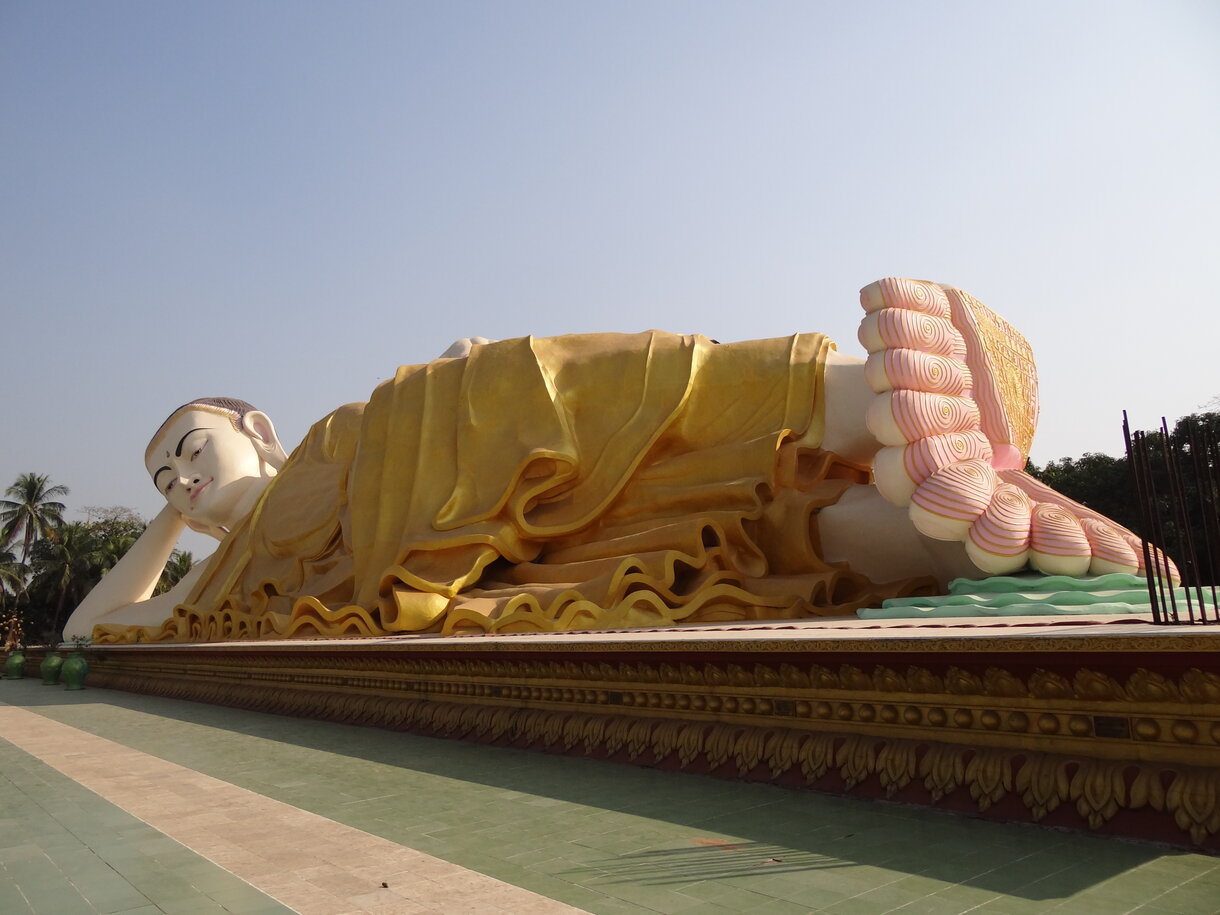Bago is a city rarely visited by tourists, a fact reflected in the warm curiosity of its residents. Locals often greet visitors with smiles, strike up conversations, and observe tall foreigners with genuine interest. This authentic interaction with the local community allows travelers to experience the true spirit of Myanmar.
The city’s greatest attraction is the monumental Shwethalyaung Buddha, a reclining statue measuring an impressive 55 meters in length and 16 meters in height—making it one of the largest of its kind in the world. Built in 994 by the Mon King Migadepa, the statue has been a significant pilgrimage site for centuries. Unlike many reclining Buddhas that depict the moment of death, this statue shows Buddha in a state of relaxation, highlighted by his open eyes and slightly parted feet, symbolizing serenity and peace

The statue’s history is truly fascinating. After Bago was destroyed in 1757, the Shwethalyaung Buddha was forgotten and hidden beneath jungle growth for over a century. It was rediscovered by chance in 1880 during the construction of the railway in the British colonial era. Restoration quickly began, and in 1903, an iron pavilion was built to protect the statue from the elements. Today, visitors can admire not only the Buddha itself but also the intricate mosaic pillow beneath his head and the decorated Italian marble on the platform
Entry to the temple is often free, though a small fee may be charged for photography. Pay attention to the wall murals depicting the legend of the statue’s creation and scenes from the Buddha’s life. On the railings, you’ll spot images of the mythical naga serpent, a guardian of Buddhism in Myanmar.

Bago is a place where history and spirituality blend seamlessly with daily life. It’s well worth a visit—not only to marvel at the impressive statue but also to experience the authentic atmosphere of the Burmese countryside.

Leave a Reply